Building a Collection #52
Scheherazade, Op. 35
By Nikolai Rimsky-Korsakov
______________
“Orchestration is part of the very soul of the work. A work is thought out in terms of the orchestra, certain tone-colors being inseparable from it in the mind of its creator and native to it from the hour of its birth.”
-Nikolai Rimsky-Korsakov
Welcome back readers to Building a Collection, where we have arrived at #52. Occupying this spot is Nikolai Rimsky-Korsakov’s Scheherazade, also commonly spelled Sheherazade, one of the most beloved and enduring classical works of all-time. This colorful and exhilarating work full of exotic themes and attractive melodies is a work every music lover should know.
Nikolai Rimsky-Korsakov
Nikolai Andreyevich Rimsky-Korsakov was born in March 1844 in Tikhvin, Russia and died in June 1908 in Lyubensk, Russia. A brilliant orchestrator with a talent for creating colors in his music, Rimsky-Korsakov left behind operas, chamber works, songs, orchestral works, and symphonies. Far and away his most popular works are the symphonic suite Scheherazade, the Capriccio Espagnol, and the Russian Easter Overture.
Rimsky-Korsakov was also a member of “The Five”, a group of select Russian composers who were contemporary with each other. The other members of The Five were Mily Balakirev (the leader), Cesar Cui, Modest Mussorgsky, and Alexander Borodin. They all collaborated in St. Petersburg between the years 1856 and 1870.
Although Rimsky-Korsakov studied the piano as a young man, he chose to enter the College of Naval Cadets in St. Petersburg in 1856. All the while he continued piano lessons, and eventually met Balakirev, who would become a mentor and friend. After graduating from the naval school in 1862, Rimsky-Korsakov was at sea for over two years. During that time, he devoted his free time to composing. In 1865, his friend Balakirev conducted Rimsky-Korsakov’s First Symphony, which was well received and hailed as the most important Russian symphonic work to date.
By 1871, Rimsky-Korsakov had been appointed professor of composition and orchestration at the St. Petersburg Conservatory. During the next decade, he would compose, conduct, and collect Russian folk songs. Rimsky-Korsakov would focus much of his composition on operas, particularly some with fantastical or mythological themes. The death of Mussorgsky in 1881 saddened Rimsky-Korsakov greatly, and he spent a great deal of time editing his friend’s unpublished manuscripts. A master orchestrator, Rimsky-Korsakov became well-known for editing unfinished music by other composers, and in 1887 when Borodin died, he agreed to orchestrate and complete Borodin’s famous opera Prince Igor.
In 1887 Rimsky-Korsakov wrote the Capriccio Espagnol and finished the Russian Easter Overture and Scheherazade the following year. After achieving great success with these works, Rimsky-Korsakov experienced a period of depression and despondency after the deaths of family members and the death of Tchaikovsky in 1893. Rimsky-Korsakov’s progressive political leanings would later lead to him being dismissed from his teaching post. Undeterred, he went on to compose his last opera The Golden Cockerel in 1907, inspired by a politically subversive story by Pushkin. The subject matter definitely raised suspicions by the government censors, but it was finally produced in 1909 after Rimsky-Korsakov’s death.
Scheherazade
One of Rimsky-Korsakov’s signature compositional characteristics is his imaginative display of orchestral color. The finest example of this is his symphonic suite Scheherazade from 1888. Rimsky-Korsakov’s most popular work, Scheherazade uses beautiful melodies against a backdrop of vast yet brilliant orchestral colors.
Based on the famous collection of Middle Eastern prose and folk tales One Thousand and One Nights or also in English The Arabian Nights, the conception of the work is due to the significant influence of the East in Imperial Russian, as well as a wide interest in Orientalism in general. Scheherazade refers to the main character Scheherazade from One Thousand and One Nights, and in the suite is represented by the first violin part, a very important aspect of the piece.
Rimsky-Korsakov’s own headnote explains the scenario:
“The Sultan Schahriar, persuaded of the falseness and faithlessness of women, has sworn to put to death each one of his wives after the first night. But the Sultana Scheherazade saved her life by interesting him in tales she told him during 1,001 nights. Pricked by curiosity, the Sultan put off his wife’s execution from day to day, and at last gave up entirely his bloody plan.”
The symphonic suite that follows depicts four such lifesaving narratives, set to music. The composer deliberately made the titles vague so that they are not associated with specific tales or voyages of Sinbad. In a later edition, Rimsky-Korsakov did away with titles altogether, desiring instead that the listener should hear his work only as an Oriental-themed symphonic music that evokes a sense of the fairy-tale adventure, stating:
“All I desired was that the hearer, if he liked my piece as symphonic music, should carry away the impression that it is beyond a doubt an Oriental narrative of some numerous and varied fairy-tale wonders and not merely four pieces played one after the other and composed on the basis of themes common to all the four movements.”
He went on to say that he kept the name Scheherazade because it brought to everyone’s mind the fairy-tale wonders of Arabian Nights and the East in general. Even so, the titles he used originally for each section have remained, and it may be relevant to describe some details from the original conception, as related in the All-Music Guide:
I. The Sea and Sinbad’s Ship - opens with growling chords that represent the Sultan, followed by the sinuous solo violin melody that depicts Scheherazade weaving her tales. Scheherazade recedes, and a swaying melody enters on the strings, swelling like the sea. Brass accents occasionally cause the sea to crash and storm, and sweetly scored interludes suggest island dalliances, but the movement ends with a quiet depiction of what must be calm seas and steady wind.
II. The Story of the Kalender Prince - concerns a prince who disguises himself as a beggar and searches for wisdom. His melancholy theme first appears in solo woodwinds, then enters the strings and quickens as the Prince sets out on his journey. Rimsky-Korsakov suggested that “one might see a fight” when a martial variant of the Sultan’s theme enters, surrounded by nervous string oscillations, while a later section with fluttering woodwinds and pizzicato string chords suggests “Sinbad’s might bird, the Roc.”
III. The Prince and the Princess - explores an unnamed Eastern palace; the Prince appears as a sensual, langorous string theme, the Princess as a relaxed arc of flute melody.
IV. Festival at Baghdad. The Sea. The Ship Breaks against a Cliff Surmounted by a Bronze Horseman - Sultan is in an irascible mood, and Scheherazade tries to appease him by describing the restless energy of the festival at Baghdad. From there, the action moves out to sea, where the weather has worsened. Brass cry out, winds sweep up and down, and the music grows to a massive climax topped by a frightening bitonal crash depicting the ship striking rocks and sinking. The storm subsides, and finally the themes of Scheherazade and the Sultan mingle, with Scheherazade’s violin playing its highest harmonies.
Scheherazade, in the form of the orchestra’s first violin playing her theme which returns throughout the work, is incredibly important to the feeling and mood of the piece.
Essential Recording
One of the most famous conductors of all-time, Leopold Stokowski was born in 1882 in London, England and died in 1977 in Nether Wallop, Hampshire, England. His father was Polish, his mother Irish, and he was raised as an Englishman. Later in his life he would develop a vaguely foreign accent, widely believed to be something he affected purposely in order to sound more exotic.
Stokowski pioneered the use of “free” bowing, which resulted in a rich homogenized string tone. He also became known for experimentation with orchestral seating, and especially for his use of spotlighting upon his own hands (Stokowski was one of the first conductors to give up using a baton, and his hand gestures were almost hypnotic) and his large head of hair to emphasize the theatrical aspect of performance. You will recognize Stokowski from his famous appearance as the leader of The Philadelphia Orchestra in Walt Disney’s classic animation film Fantasia from 1940. His famous conducting gestures from Dukas’ The Sorcerer’s Apprentice from the film are iconic. Stokowski was also the inspiration for the Looney Tunes’ conductor in The Rabbit of Seville starring Bugs Bunny and Elmer Fudd.
Later he would become obsessed with recordings and recorded sound, and often experimented with new technologies and microphone placements to enhance sound. Stokowski was one of the pioneers for the use of a recording process in the U.K. that came to be known as Phase 4 Stereo by Decca Records beginning in 1961. Over two hundred albums in Phase 4 were released, including several conducted by Stokowski. One of the features Stokowski liked was the “multi-miking” approach, which used many more microphones than usual strategically placed for maximum sound capture and effect. We will return to this point shortly regarding the recording at hand.
Critics of Stokowski complained that he was a charlatan and a showman with little substance. His affected accent and gestures led many to surmise that his musical education was lacking, that he was disliked by other musicians, that he was an over-the-top eccentric, that the sound he produced was artificial, or that he was only interested in himself. None of those criticisms were true, and there has been quite a lot of reassessment of Stokowski since his death that has resulted in an increased appreciation for his talent, innovation, and legacy.
There are many fine recordings of Rimsky-Korsakov’s Scheherazade. But Stokowski clearly loved the work, recording it at least five times commercially. Furthermore, he seemed to understand the dreamy and fantastical nature of the music better than most. For me, he recorded two Scheherazades that compete against each other for the best version available, but the one that rises to the top is his 1964 recording with the London Symphony Orchestra, recorded in Decca Phase 4 Stereo in London. The sound is bold, immediate, and spectacular for its time. The Phase 4 20-channel system with wide microphone placement obtains what is without a doubt truly stunning sound. Like Stokowski himself, the sonics are exciting and flamboyant.
Perhaps not everyone will enjoy the “enhanced” sound on this recording because it is not as natural or as balanced as other versions. I love the immediacy and the juicy sound, but there are moments of garishness and a few times you can hear the sound overload in the form of static feedback at high dynamic ranges. The sound can be overbearing in spots, so take it easy on your ears. It should also be noted that Stokowski takes some liberties with the score in a few places, as he did often. For me, this does not detract from the performance at all.
The performance, in my estimation, is the most appealing and characterful the work has ever received. Leading the way is the violinist Erich Gruenberg of the LSO (who incidentally would record Scheherazade other times with the LSO and the Royal Philharmonic Orchestra, most notably in Stokowski’s other contender from 1975 on RCA/Sony). For me, Gruenberg is simply THE finest Scheherazade on record (if anything he is even finer on Stokowski’s later recording) and here he plays sensitively and seductively. Gruenberg is matched by the rest of the orchestra in its passion and energy, something that is a bit lacking in the 1975 recording. This is a vital performance, bringing out all the colors from every section, and each movement has moments of brilliance. Stokowski’s vision and creativity are a good match for Rimsky-Korsakov’s orchestration. The cellos, brass, woodwinds, and percussion practically jump out at you. That is not to say there isn’t subtleness, as the phrasing and rubati are admirable, as well as Stokowski’s feel for lyricism. The strings are luminous and gorgeous, the brass are clear and thrilling. Stokowski was an idiosyncratic conductor, and he even encouraged this in his players, but on this recording it adds up to a powerful and evocative reading with bright and clear sound to match. If you prefer your listening experience to be calmer and more relaxed, you may want to look elsewhere. But in terms of visceral excitement and spectacular sound, this Scheherazade cannot be beat.
Recommended Recordings
The aforementioned classic recording with Leopold Stokowski leading the Royal Philharmonic Orchestra from 1975 on RCA/Sony is also recommended. The 91 year-old Stokowski leads a beautiful Scheherazade with sublime solo playing from Erich Gruenberg. While not as exciting as the 1964 recording above, some prefer this recording for its more natural sound and balance, still with plenty of Stokowski touches. It should also be noted that this recording is paired with a fantastic Russian Easter Overture from a Stokowski visit with the Chicago Symphony Orchestra, a really brilliant performance.
Igor Markevitch recorded Scheherazade with the London Symphony Orchestra in 1962, originally on Philips and now reissued on Decca Eloquence and also in a new Markevitch boxed set. Once again Erich Gruenberg plays brilliantly on solo violin, and Markevitch has a special affinity for this piece that captures the eastern flavor more than most.
Fritz Reiner and the Chicago Symphony Orchestra recorded the work for RCA Living Stereo in 1960. Long admired by listeners and critics, this recording took advantage of the Living Stereo recording techniques to maximum effect. Reiner brings out the idiomatic feeling from his Chicagoans, and with shimmering sound, and sensuous playing, this remains one of the greatest Scheherazades on record.
Russian conductor Kirill Kondrashin led the Concertgebouw Orchestra from Amsterdam in a recording from 1979 on Philips (now Universal) with Herman Krebbers adding the beautiful violin parts. The recording has an excellent warm sound, and Kondrashin is an expert guide. The individual instruments are also caught very well, and Kondrashin never lets the proceedings drag. A very solid choice.
Sir Thomas Beecham led the Royal Philharmonic Orchestra in a recording made in 1958 by EMI (now Warner). Another classic account, for many listeners over the years this has been their preferred version. Beecham draws committed playing from his orchestra, and the sound is exceptional for its time. Perhaps not quite as idiomatic as some, but very enjoyable nonetheless.
Other Notable Recordings
Orchestre De La Suisse Romande / Ernest Ansermet (Decca 1961)
The Philadelphia Orchestra / Eugene Ormandy (Sony 1962)
Berlin Philharmonic Orchestra / Herbert von Karajan (DG 1967)
London Symphony Orchestra / Sir Charles Mackerras (Telarc 1990)
New York Philharmonic / Yuri Temirkanov (RCA/Sony 1993)
Orchestre de l'Opéra Bastille / Myung-Whun Chung (DG 1993)
Atlanta Symphony Orchestra / Robert Spano (Telarc 2001)
Kirov Orchestra / Valery Gergiev (Decca 2002)
Orchestra dell'Accademia Nazionale di Santa Cecilia / Antonio Pappano (Warner 2024)
Thank you to everyone for reading once again. I hope you are enjoying the Building a Collection series, and please join me again next time when we discuss Carl Orff’s epic choral work Carmina Burana, at #53 on the list.
See you then!
______________
Notes:
Abraham, Gerald, ed. (1990). The New Oxford History of Music, Volume IX, Romanticism (1830–1890). Oxford University Press. pp. 508, 560–62. ISBN 0-19-316309-8.
Brennan, Gerald. Malone Lindemann, Andrew. Minderovic, Zoran. Schrott, Allen. Woodstra, Chris. All Music Guide to Classical Music, The Definitive Guide. All Media Guide. Pp. 1100, 1102, 1311. Backbeat Books, San Francisco. 2005.
Lieberson, Goddard (1947). Goddard Lieberson (ed.). The Columbia Book of Musical Masterworks. New York: Allen, Towne & Heath. p. 377.
Mason, Daniel Gregory (1918). The Appreciation of Music, Vol. III: Short Studies of Great Masterpieces. New York: H.W. Gray Co. p. 35. Retrieved 2008-11-02.
Rimsky-Korsakov, Nikolay Andreyevich (1942). My Musical Life. translated by Judah A. Joffe (3rd edition). Alfred A. Knopf.
https://www.azquotes.com/author/80952-Nikolai_Rimsky_Korsakov
http://www.musicweb-international.com/classrev/2003/nov03/Scheherazade_Stokowski.htm
https://en.wikipedia.org/wiki/Nikolai_Rimsky-Korsakov
https://en.wikipedia.org/wiki/Scheherazade_(Rimsky-Korsakov)
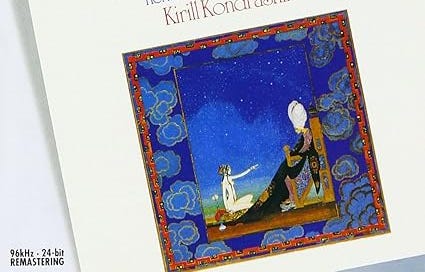


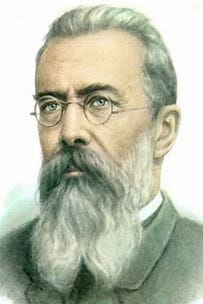

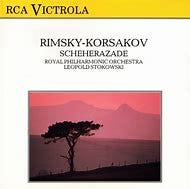
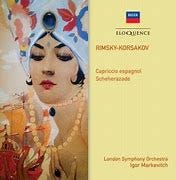
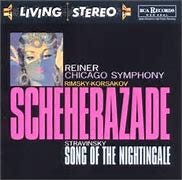

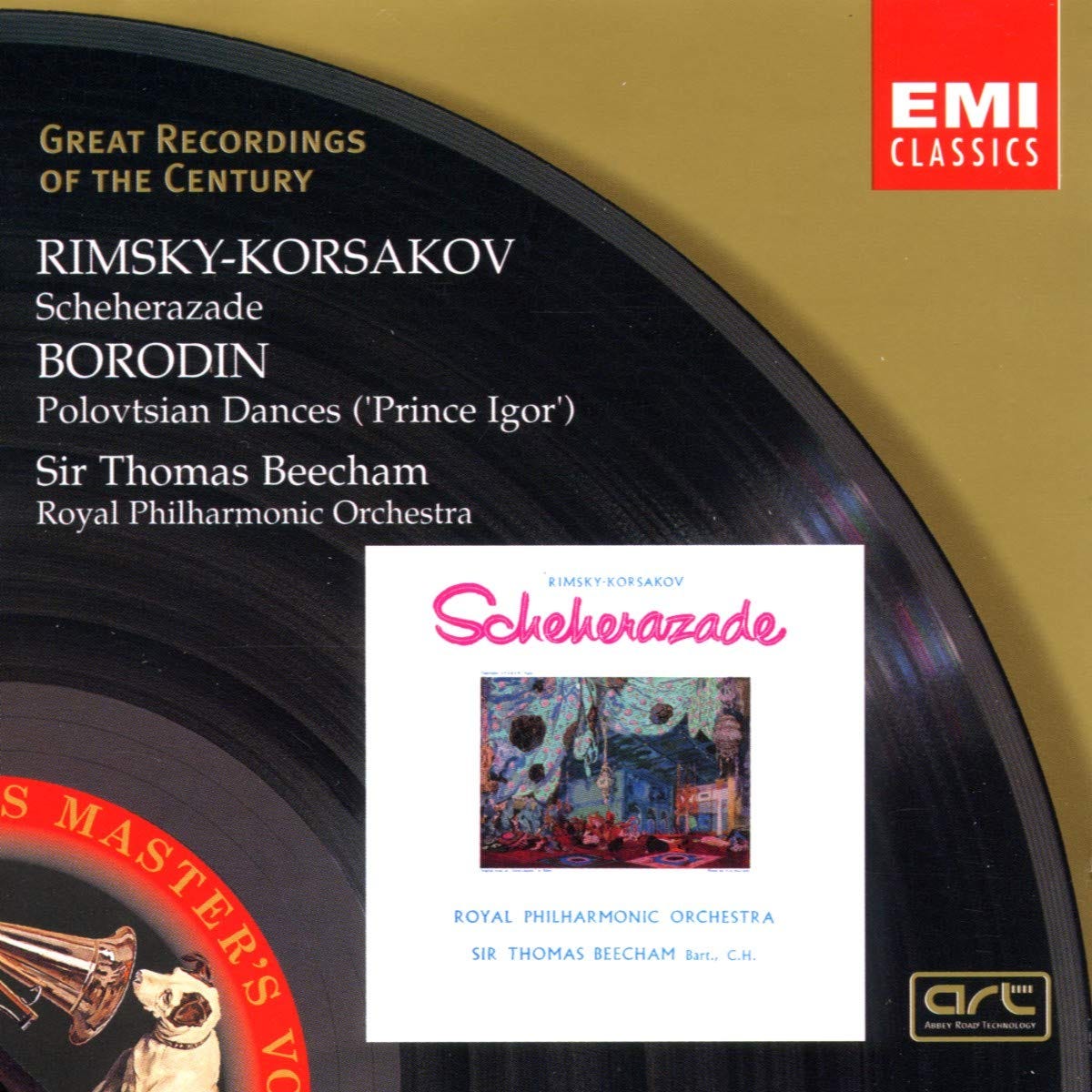
Thank you for sharing! I believe Chung is unfairly neglected. I saw him conduct a terrific Tchaikovsky Pathetique in Boston years ago. I really want to appreciate Celibidache more, perhaps I’m not patient enough.
Thank you for another fine survey. With Mussorgsky’s “Pictures” and Dvorak’s “New Word” this was my first encounter with Classical Music, like many others I think because the evocative charm of this piece. I remember beeing in my twenties when I went to a store that rented CDs looking for rock and pop music but There was also a lot of Classical Music and I was intrigued by the covers and by the memory of the music my brother plays at home years before. It was love at first listening! A love that lasts to this days. Regarding Sheherazade I want to mention two others interpretations (IMUO both superior to Karajan): Muti with Philadelphia Orchestra on EMI and Lorin Maazel with Berliner on DGG.